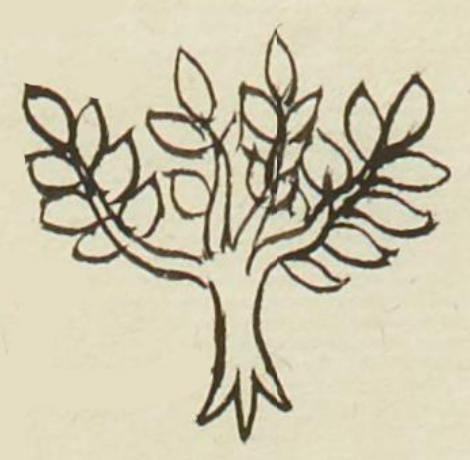Tzompanhua (MH718r)
This black-line drawing of the simplex glyph for the personal name, Tzompanhua (perhaps, “One Who Has a Tzompantli,” which can be a tree or a skull rack), is attested here as pertaining to a man. The glyph shows a frontal view of a tree with four branches and large leaves on each branch. This tree could be a stand-in for a skull rack, which could have been too inflammatory for Spanish colonial officials. If so, then it is a homophonic phonogram.
Stephanie Wood
Given that there was at least one town called Tzompanhuacan, the “name” Tzompanhua may actually refer to a person from that town. Another tree appears for Tzompan in this collection. Some other glyphs for Tzompan treat it entirely phonographically, combining hair (tzontli) with flags (panitl or pamitl). These also seem to represent efforts to disguise the real meaning of the name.
Stephanie Wood
peo. tzonpaua
Pedro Tzompanhua
Stephanie Wood
1560
Jeff Haskett-Wood
tzompantli, árboles, nombres de hombres

tzompan(tli), a skull rack or a tree, https://nahuatl.wired-humanities.org/content/tzompantli
tzompancuahui(tl), a coral tree, https://nahuatl.wired-humanities.org/content/tzompancuahuitl
-hua, a possessive, https://nahuatl.wired-humanities.org/content/hua
cierto árbol, o Estante de Cráneos
Stephanie Wood
Matrícula de Huexotzinco, folio 718r, World Digital Library, https://www.loc.gov/resource/gdcwdl.wdl_15282/?sp=514&st=image
This manuscript is hosted by the Library of Congress and the World Digital Library; used here with the Creative Commons, “Attribution-NonCommercial-ShareAlike 3.0 License” (CC-BY-NC-SAq 3.0).







